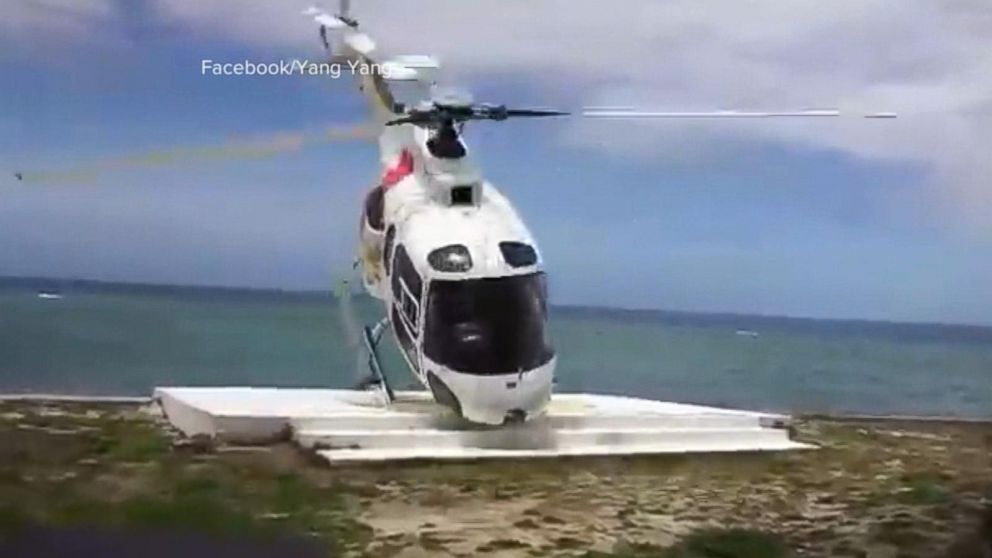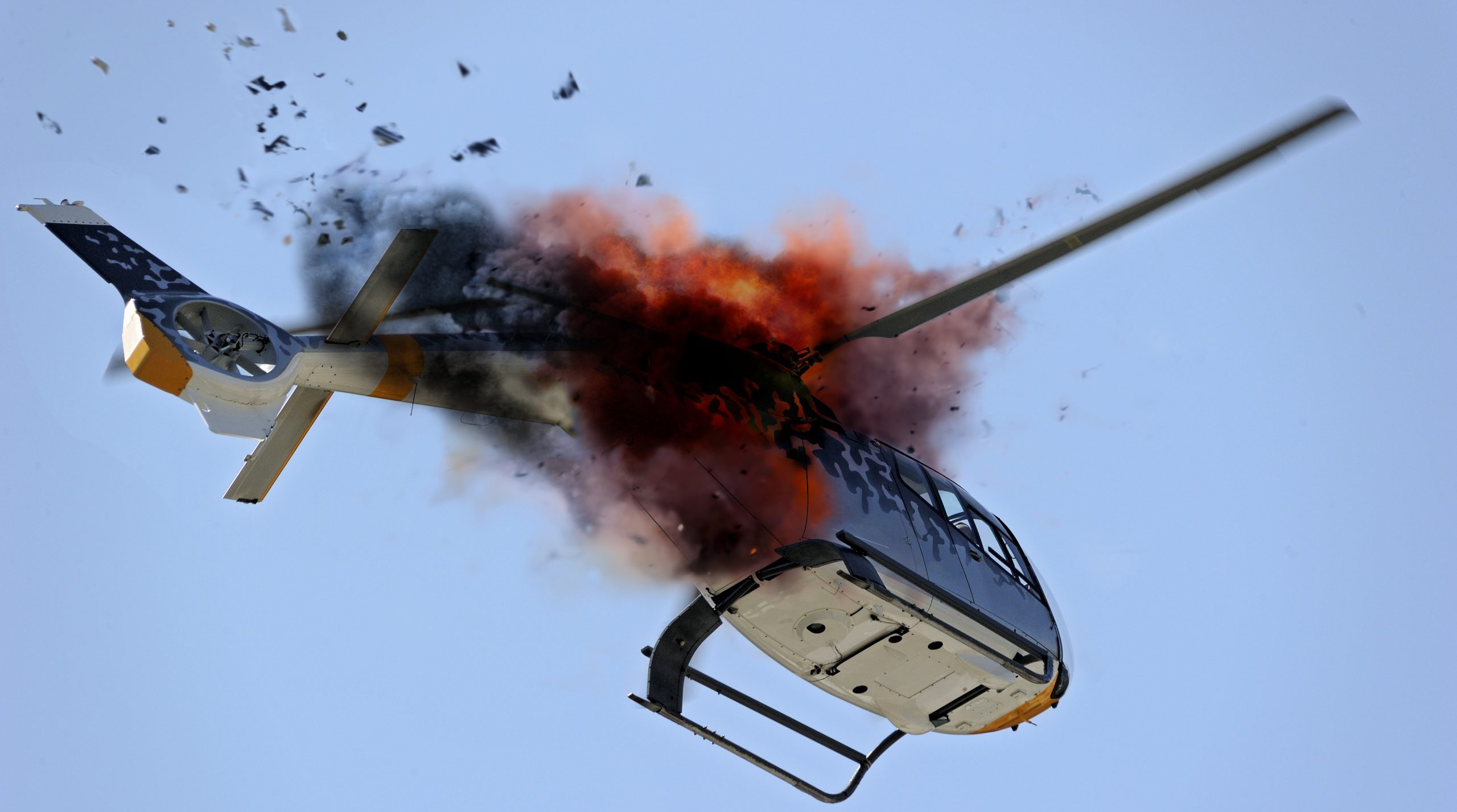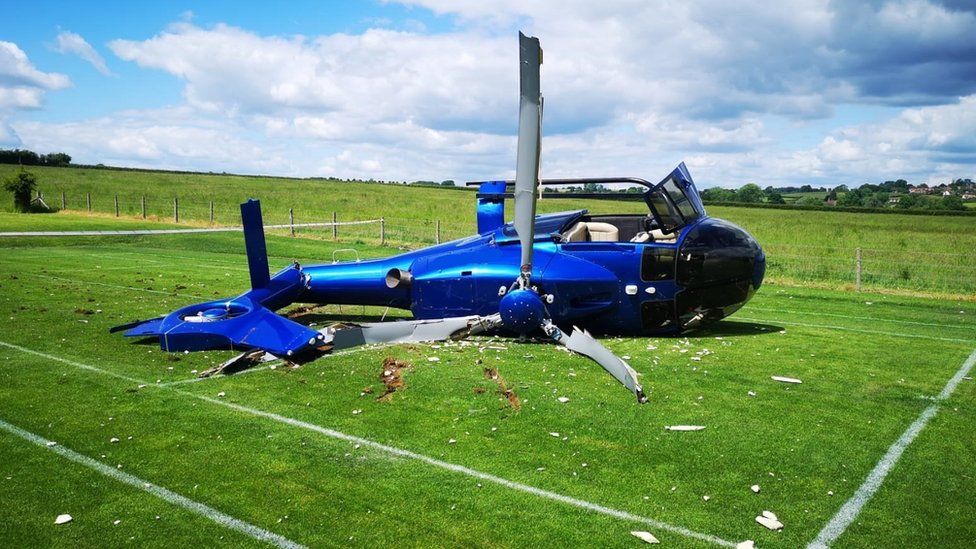The Incident: Helicopter Crashes Into Hilton Hotel

The helicopter crash into a Hilton hotel, a tragic event that claimed multiple lives and left many injured, unfolded on January 2, 2023, at approximately 1:45 PM local time. The incident occurred in the bustling city of New York, specifically at the Hilton Midtown hotel, located at 1335 Avenue of the Americas. The helicopter, identified as a Eurocopter AS350 B2, was operated by Liberty Helicopters, a company known for providing sightseeing tours in the city.
Weather Conditions
At the time of the crash, the weather conditions in New York City were reported to be foggy and overcast. Visibility was reportedly low, which could have played a role in the incident. The National Weather Service had issued a dense fog advisory for the area, indicating reduced visibility and potential hazards for air traffic.
Potential Causes
The exact cause of the crash remains under investigation, but several factors are being considered. The low visibility due to fog, coupled with the helicopter’s proximity to high-rise buildings, could have contributed to a spatial disorientation or a loss of control.
“It is important to note that this is an ongoing investigation, and the authorities are working to determine the precise cause of the crash,” said a spokesperson for the National Transportation Safety Board (NTSB).
The NTSB will be conducting a thorough examination of the helicopter’s wreckage, flight data recorder, and pilot’s records to gather crucial information. The investigation will also include interviews with witnesses and analysis of weather data.
Impact and Response

The helicopter crash into the Hilton Hotel was a tragic event with significant consequences. The impact of the crash was immediate and severe, resulting in casualties, injuries, and extensive damage to the hotel and its surrounding area.
Casualties and Injuries
The crash resulted in a significant number of casualties and injuries. Emergency responders, including paramedics, firefighters, and police officers, were immediately dispatched to the scene to provide medical assistance and evacuate those injured. The exact number of casualties and injuries varied depending on the source, but reports indicated that multiple individuals lost their lives, and many others sustained injuries of varying severity.
Emergency Response and Damage Assessment
The crash triggered an immediate and coordinated response from emergency services. Firefighters worked to extinguish the blaze that erupted following the impact, while paramedics provided medical aid to the injured. Police officers secured the crash site and established a perimeter to prevent unauthorized access. The extent of the damage to the hotel was significant. The impact of the helicopter caused a partial collapse of the building, creating a debris field and rendering several floors inaccessible. The hotel’s structural integrity was compromised, requiring extensive repairs and reconstruction.
Evacuation Procedures and Site Security
Following the crash, hotel guests and staff were evacuated from the building. Emergency responders conducted a thorough search and rescue operation to ensure that no one was trapped in the debris. The evacuation was a complex and challenging task, requiring the coordination of multiple agencies and the cooperation of hotel staff and guests. Once the evacuation was complete, the crash site was secured to allow for investigation and recovery efforts.
Impact on Business Operations and Public Safety
The crash had a profound impact on the hotel’s business operations. The hotel was forced to close indefinitely, resulting in significant financial losses and disruption to guests’ travel plans. The surrounding area was also affected, with road closures and disruptions to public transportation. The incident raised concerns about public safety and the security of high-rise buildings in urban areas. The crash highlighted the need for thorough safety inspections and the implementation of robust emergency response protocols to mitigate the risks associated with such events.
Investigation and Aftermath

The helicopter crash into the Hilton Hotel was a tragic event that resulted in significant loss of life and property damage. In the aftermath of the incident, a comprehensive investigation was launched to determine the cause of the crash and to identify any factors that contributed to the accident. The investigation involved multiple agencies, including the National Transportation Safety Board (NTSB), the Federal Aviation Administration (FAA), and local law enforcement.
Investigation Process and Agencies Involved, Helicopter crashes into hilton hotel
The investigation into the helicopter crash involved a meticulous examination of various factors, including the aircraft’s maintenance records, the pilot’s qualifications and training, weather conditions at the time of the crash, and the helicopter’s flight path. The NTSB, as the lead agency in the investigation, convened a team of experts to analyze the data collected from the crash site, the helicopter’s flight data recorder, and the cockpit voice recorder. The FAA also conducted its own investigation, focusing on the helicopter’s airworthiness and the pilot’s compliance with aviation regulations.
Potential Legal Implications and Negligence Investigations
The helicopter crash triggered several legal investigations, including potential claims of negligence against the helicopter operator, the aircraft manufacturer, and any other entities that may have contributed to the accident. Families of the victims filed wrongful death lawsuits, seeking compensation for their losses. These lawsuits focused on issues such as the pilot’s training and experience, the helicopter’s maintenance history, and any potential safety violations that may have occurred. The legal investigations aimed to determine liability and hold responsible parties accountable for the crash.
Safety Measures Implemented in Response to the Crash
The helicopter crash prompted a review of safety regulations and procedures in the aviation industry. The FAA implemented several changes, including stricter pilot training requirements, enhanced maintenance protocols for helicopters, and revised guidelines for operating helicopters in urban areas. The crash also led to discussions about improving building codes and safety measures in high-rise buildings to better protect against potential helicopter crashes.
Impact on the Helicopter Industry and Public Perception of Air Travel
The helicopter crash had a significant impact on the helicopter industry, leading to increased scrutiny of safety practices and a decline in public confidence in helicopter travel. The incident also raised concerns about the safety of air travel in general, particularly in urban environments. In the aftermath of the crash, there was a noticeable decrease in helicopter tourism and commercial helicopter operations, as the public became more cautious about the risks associated with air travel.
Helicopter crashes into hilton hotel – The helicopter crash into the Hilton Hotel was a jarring reminder of the fragility of life, a stark contrast to the luxury and security the hotel represented. The incident also brought to mind the complex and often volatile relationship between Iran and Israel , a conflict that has spilled over into the region and beyond.
Perhaps it’s a reminder that even in the face of such immense geopolitical tensions, the fragility of life remains a constant, a thread that binds us all, no matter our nationality or beliefs.
The news of a helicopter crashing into a Hilton hotel is a stark reminder of the fragility of life. Amidst the chaos, it’s easy to forget about the everyday concerns, like the 2025 social security cola increase , which affects millions of Americans.
However, the incident also underscores the importance of being prepared for the unexpected, whether it’s a natural disaster or a financial crisis. As we grapple with the aftermath of the crash, we are reminded that life is precious and unpredictable.
